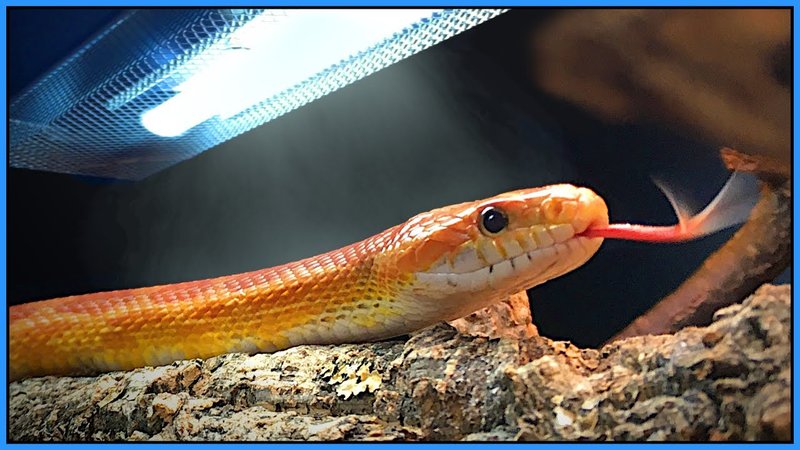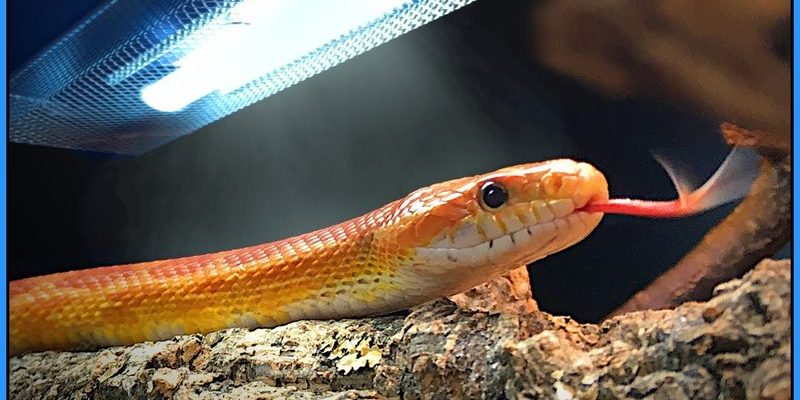
Corn snakes are fantastic pets and relatively easy to care for, making them a popular choice for both beginners and seasoned reptile enthusiasts. But when it comes to their lighting needs, it’s essential to separate the facts from the myths. You might be wondering what UVB lighting is, why it might matter for your corn snake, and how to implement it in their habitat. So, let’s break it down together.
What is UVB Lighting?
Let me explain UVB lighting in simple terms. UVB stands for Ultraviolet B, which is a type of light emitted by the sun. It’s crucial for reptiles because it helps them produce vitamin D3, a vitamin that plays a vital role in calcium absorption. Without enough vitamin D3, snakes can develop serious health issues, much like how humans need sunlight to help our bodies absorb calcium—we need it for strong bones.
In the wild, snakes bask in natural sunlight, soaking up those UVB rays, which helps them thrive. But in captivity, they need a little help. That’s where artificial UVB lighting comes in. Think of it as a mini sunshine generator that you place in your snake’s enclosure. It mimics the sun’s rays, giving your corn snake the benefits it would receive in its natural habitat.
Do Corn Snakes Really Need UVB Lighting?
Now, here’s the thing—you might read conflicting information online about whether corn snakes need UVB lighting. The short answer is: while they can live without it, providing UVB lighting can significantly improve their health and well-being.
Corn snakes are not as reliant on UVB as some other reptiles, like iguanas or bearded dragons. They can get by, but it’s like living on fast food without any fruits or veggies—they might survive, but they won’t thrive. If you want your corn snake to have the best quality of life, offering UVB lighting is a smart move.
That said, if you choose to skip UVB, you’ll need to monitor their diet closely. A diet rich in vitamins and minerals becomes even more critical, as your snake won’t be able to synthesize vitamin D3 naturally. So, while it’s not mandatory, it’s certainly beneficial.
Benefits of Providing UVB Lighting
Alright, let’s dig into the benefits of UVB lighting for corn snakes. Here’s what you can expect:
- Improved Calcium Absorption: UVB lighting helps snakes absorb calcium properly, reducing the risk of metabolic bone disease—a serious condition that can lead to fractures and deformities.
- Enhanced Activity Levels: Corn snakes with access to UVB often exhibit more energy and curiosity. It’s like giving them a boost of vitality, making them more active and interactive.
- Better Overall Health: A well-lit environment can lead to a stronger immune system, helping your snake ward off illnesses. Just like how we feel better with some sunlight, your corn snake will benefit too.
- Natural Behavior: Basking under UVB light mimics natural behaviors found in the wild, reducing stress and promoting natural instincts.
In summary, while not strictly necessary, providing UVB lighting can significantly enhance your corn snake’s life. Think of it as an investment in their happiness and health.
Choosing the Right UVB Light for Your Corn Snake
When it comes to selecting UVB lighting for your corn snake, there are several options available that cater specifically to reptile needs. Here’s what to consider:
1. Type of UVB Fixture: There are two main types: fluorescent tubes and compact bulbs. Fluorescent tubes are often recommended because they distribute UVB light more evenly across the enclosure. Compact bulbs can work too, especially in smaller setups.
2. UVB Output: Look for bulbs that have a UVB output of 2.0 to 10.0. For corn snakes, a lower output (2.0 to 5.0) is usually sufficient since they don’t require intense UVB like some other reptiles.
3. Positioning: Place the light source within 12-18 inches of where your snake likes to bask. Corn snakes appreciate warmth, so combine the UVB light with a heat source to create a comfortable basking spot.
4. Replacement Schedule: UVB bulbs lose their effectiveness over time, so it’s essential to replace them every 6 to 12 months, even if they’re still lighting up. Think of it like a car—just because it’s running doesn’t mean it’s in top shape.
Setting Up Your Corn Snake’s Enclosure with UVB Lighting
Let’s talk about how to incorporate UVB lighting into your snake’s habitat seamlessly. Here’s a simple guide:
1. Choose the Right Enclosure: Make sure your snake’s home is sturdy and has enough space for both the UVB light and heat source. A larger cage can help in providing a temperature gradient, allowing your snake to choose its comfort zone.
2. Install the UVB Fixture: Follow the manufacturer’s instructions to ensure proper installation. Aim for the light to be on one side of the enclosure, creating a basking area.
3. Monitor Temperature and Light Levels: Use a thermometer to check the temperature gradient. You want a warm basking spot of about 85-90°F and a cooler side around 75-80°F. Monitor the UVB levels regularly to ensure it’s functioning properly.
4. Offer Hiding Spots: Along with the basking area, ensure there are places for your corn snake to hide and feel secure. This helps reduce stress and makes them feel comfortable in their environment.
Common Issues and Troubleshooting
While setting up UVB lighting might seem straightforward, a few issues can arise. Here are some common problems you might face and how to tackle them:
1. Insufficient UVB Exposure: If your snake doesn’t seem to bask or is lethargic, check the distance between the light and the basking area. If it’s too far, they may not receive enough UVB.
2. Bulb Burnout: If you notice a drop in activity or appetite, it might be time to replace the bulb, even if it still lights up. Remember, the UVB output decreases over time.
3. Overheating: Make sure your setup isn’t causing the basking spot to become too hot. Overheating can lead to stress and health issues. Adjust the distance of the bulb if necessary.
4. Behavior Changes: If your corn snake shows unusual behavior, like hiding excessively, it might be a sign of either too much stress or inadequate lighting. Evaluate your setup and make changes if needed.
In the end, while corn snakes can survive without UVB lighting, providing it enriches their lives and fosters better health. Think of it as a little slice of sunshine that supports their well-being. By incorporating UVB lighting into your corn snake’s habitat, you’ll be giving them a better chance at a long, healthy life full of activity and joy.
Remember, every snake is different, so pay attention to their behavior and health. If you’re ever unsure, don’t hesitate to consult with a veterinarian who specializes in reptiles. It’s all about ensuring your scaly friend feels happy and healthy in their home. Happy snake keeping!

